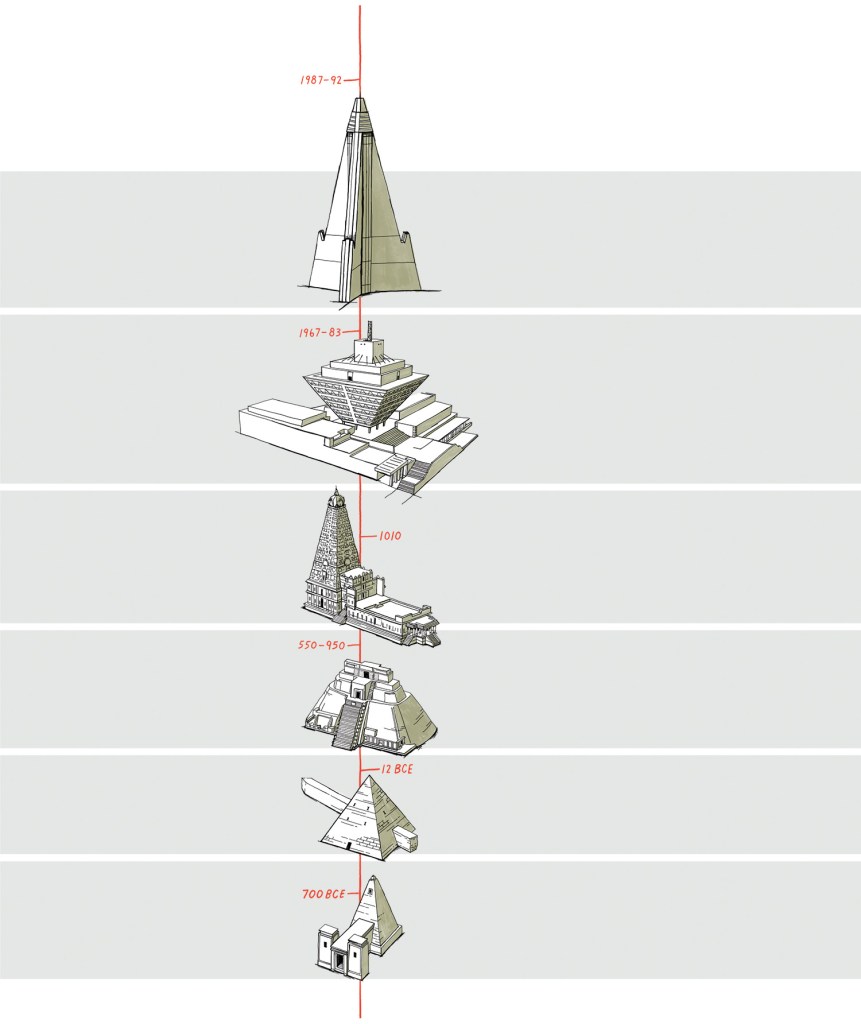You can read the history of architecture solely by the pyramidal forms that are both ancient and modern. Beyond “the pyramids,” by which we almost always mean those erected in Egypt between 2700 and 1700 B.C., many dynastic civilizations before and since have employed these forms to mark ritual sites, funereal structures, sports venues, radio broadcast buildings, and hotel resorts. Whether they’re right-side up (as a conventional beacon) or upside down (as a feat of engineering derring-do), all pyramids are geometrical, but no two are geometrical in quite the same way. Here are six pyramids that you won’t find in Egypt.
Ryugyong Hotel, Pyongyang, North Korea (designed by Baikdoosan Architects & Engineers), 1987-92
At press time, this 105-story hotel remains unopened—even though investors have continued to pump money into what some have called the “hotel of doom”— since its completion 25 years ago.
Slovenský Rozhlas, Bratislavia, Slovakia (designed by Štefan Svetko, Štefan Ďurkovič, and Barnabáš Kissling), 1967-83
Since 1985, Slovak Radio has been broadcasting from this inverted pyramid that has divided historians over the years: Is it Modernism or a kind of revival Postmodernism?
Brihadeeswarar Temple, Thanjavur, India (commissioned by Raja Raja Chola I), completed 1010
Surrounded by walls that scholars date to the 1500s, this stepped pyramid is made of solid granite that was reportedly hauled more than 60 miles to the site.
Pyramid of the Magician, Uxmal, Mexico (architect unknown), 550-950
With an elliptical base, Uxmal’s tallest structure (colloquially named for Itzamna, the ancient Mayan magician god) contains chambers at three different levels.
Pyramid of Cestius, Rome, Italy (architect unknown), 12 B.C.
Bricks, mortar, and Carrara marble cladding make this a distinctively Roman interpretation of a misunderstanding of Giza’s pyramidal proportions.
Nubian Pyramids of Meroë, outside Kabushiya, Sudan (architect unknown), completed after 700 B.C
Similar in function and form to ancient Egyptian pyramids, these Nubian versions ascend at noticeably sharper angles than their neighbors to the north.
